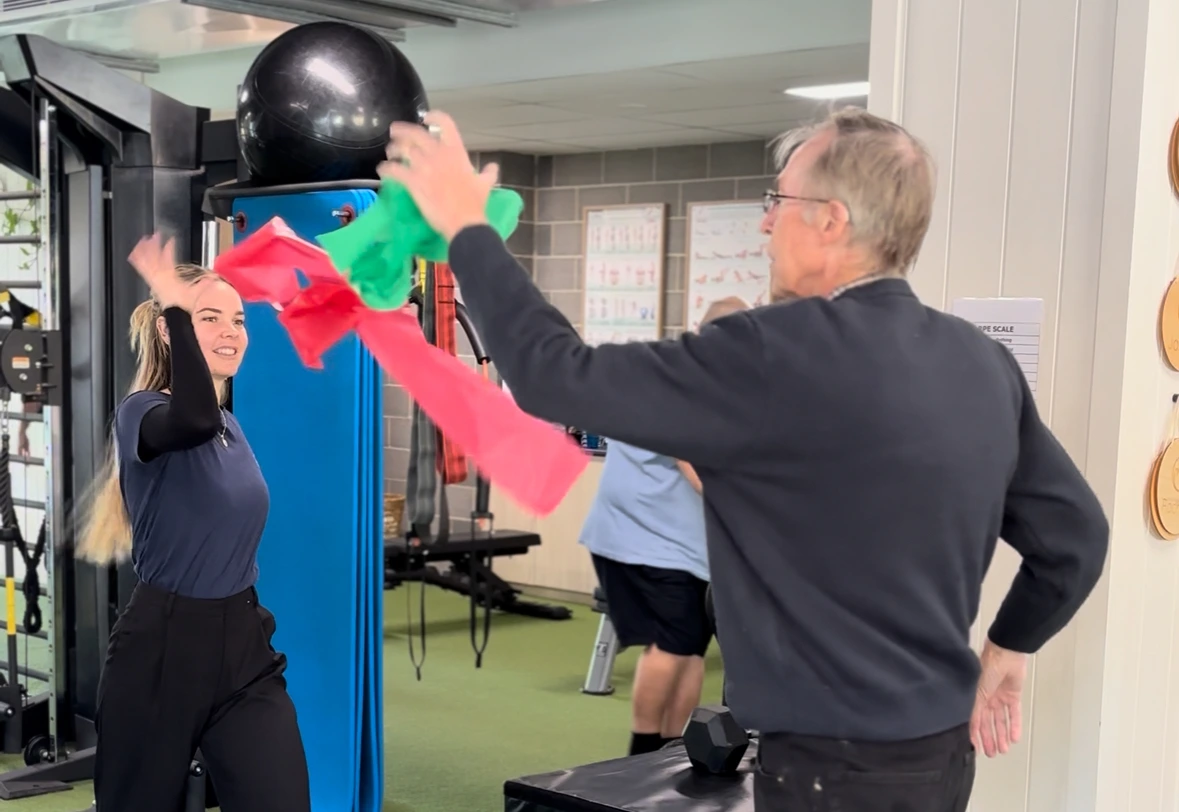
Blog

Why Exercise is the Best Medicine for Parkinson’s — and How Movement Therapy Can Help
For people living with Parkinson’s disease, movement becomes harder, slower, and often frustrating. But there’s hope—and it comes from a powerful, evidence-based tool that you already have access to: exercise.
At Movement Therapy, we don’t just prescribe generic exercise plans. We deliver a neuro-active, high-effort, movement re-training approach that’s designed specifically for people with Parkinson’s. Our programs are grounded in the same neuroscience that underpins the world’s most progressive Parkinson’s rehabilitation models—blending physical intensity, cognitive stimulation, and functional movement to retrain the brain and body.
Let’s explore why exercise is essential for Parkinson’s, and how we help you reclaim your movement, your confidence, and your life.
🧠 What’s Going On in the Brain with Parkinson’s?
To understand why exercise is so effective, we first need to understand how Parkinson’s works.
Imagine your brain as a postal system, where dopamine is like the fleet of posties delivering movement instructions from the brain to the body. In Parkinson’s disease, the dopamine-producing cells in the brain begin to die off. It’s as if the postal workers have gone on strike—letters (movement commands) arrive late, in the wrong order, or not at all. The result? Stiffness, slowness, tremors, and imbalance.
But here’s the amazing part: the brain is plastic. It can adapt and create new neural pathways when we challenge it in the right ways. That’s where targeted exercise comes in—it’s like retraining the postal service, building new roads, and hiring more efficient workers to get the job done.
💪 The Right Kind of Exercise for Parkinson’s
Not all exercise is equally effective for people with Parkinson’s. The key is neuro-active training: high-effort, high-amplitude, and mentally engaging movement that pushes the brain and body to adapt and improve.
Here’s what that looks like in a Movement Therapy session:
🔥 Big, Exaggerated Movements
Parkinson’s causes movement to shrink—people take smaller steps, have reduced arm swing, and tend to stoop. We work on amplifying movement through drills that exaggerate walking, reaching, turning, and posture. This helps reset the brain’s “movement dial,” improving how you move in real life.
🧠 Cognitive-Motor Training
Parkinson’s doesn’t just affect physical movement—it also impacts memory, focus, and multitasking. We integrate dual-task exercises that challenge the brain while moving. You might step in different directions while naming words, or practice balance while solving puzzles. This sharpens attention, improves coordination, and prepares you for complex everyday scenarios.
💥 Functional Power Drills
Our goal is to make your brain and body “ready for real life.” That means training sit-to-stands, quick changes of direction, reaching patterns, and dynamic posture control—all performed with speed and precision to stimulate fast neural processing.
🎯 Personalised Progression
Everyone’s Parkinson’s journey is unique. That’s why we tailor your program based on your current function, goals, and medical background. Exercises start at the right level and are progressively intensified to challenge your brain’s capacity to adapt and grow.
✅ Safe, Supervised Intensity
This style of training needs to be done safely and correctly. Our neuro-trained team ensures that your sessions are high-effort without being high-risk, so you can feel confident pushing your limits.
🧭 Why Start Now?
Exercise is most effective when it becomes part of your life early in the Parkinson’s journey. It can:
- Slow the progression of motor symptoms
- Improve walking, balance, and posture
- Enhance mood, motivation, and cognitive function
- Reduce the risk of falls and hospitalisation
- Improve confidence in daily life
Even for people further along in their condition, it’s never too late. The brain is always capable of change—but it needs the right challenge.
🧑⚕️ How Movement Therapy Can Help
At Movement Therapy, we bring a whole-team approach to Parkinson’s rehab:
- Neuro-trained therapists who understand the specific needs of Parkinson’s
- 1:1 and group-based programs that follow neuro-active training principles
- Structured assessments to track your progress over time
- Collaborative care with your neurologist, GP, and support team
- Motivational coaching to keep you engaged, consistent, and hopeful
Whether you’re newly diagnosed or further along in your journey, we’ll help you move better, think clearer, and feel more in control.
Parkinson’s might slow the messages between your brain and body—but it doesn’t mean you have to stop moving. With the right type of exercise, guided by the right team, you can rewire your brain, regain your strength, and rewrite your future.
Have a Question?
We're here to help!
Our Clinic Locations
Movement Therapy has two prime clinic locations: